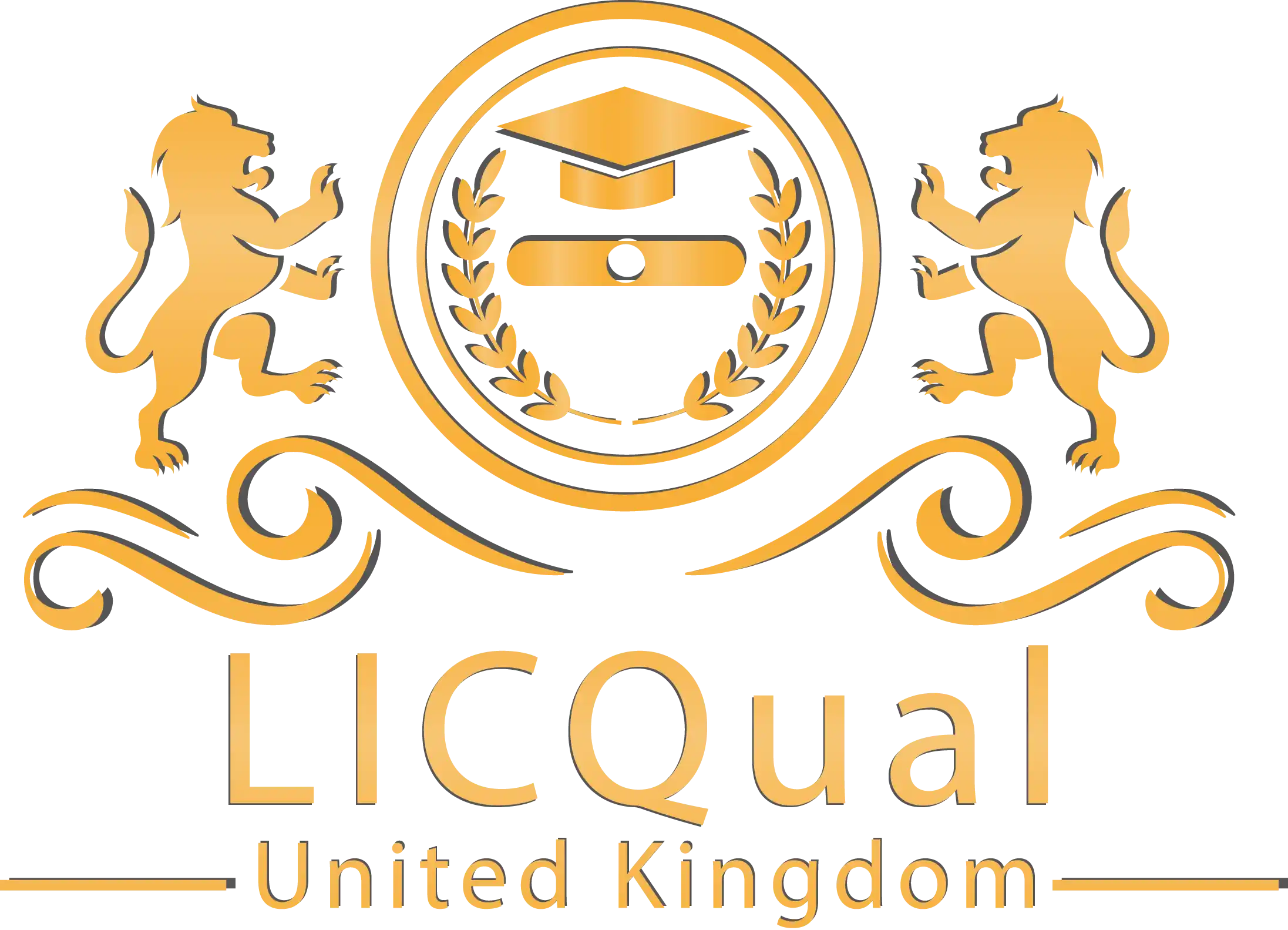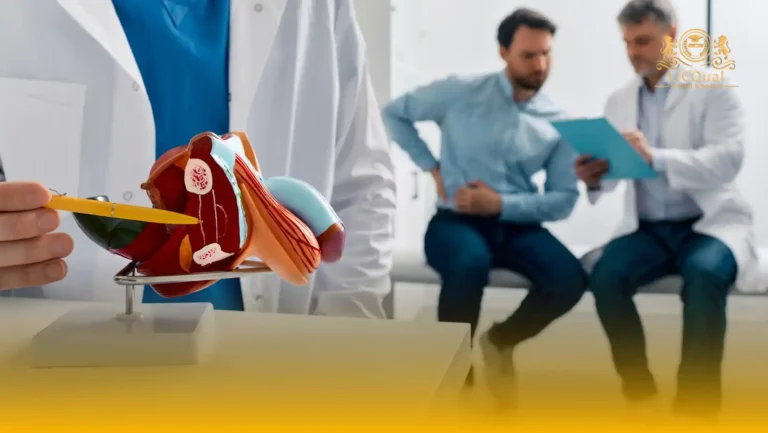The LICQual Level 3 Diploma in Radiology (Dip RD) is a specialized qualification designed for healthcare professionals seeking to advance their knowledge and expertise in diagnostic imaging and radiological practice. This diploma is not intended for beginners; it is aimed at learners who already possess foundational knowledge or experience in healthcare, radiography, or related fields. By completing this course, learners can enhance their career prospects, expand their clinical understanding, and strengthen their Continuing Professional Development (CPD).
This comprehensive qualification covers key areas of radiology, including imaging techniques, radiological anatomy, patient safety, radiation protection, and the interpretation of diagnostic images. Learners will gain both theoretical knowledge and practical skills, enabling them to apply best practices in clinical settings, support accurate diagnoses, and contribute effectively to multidisciplinary healthcare teams.
LICQual ensures that all centres delivering this diploma uphold the highest standards of training. Centres are required to employ competent and qualified staff and provide all necessary resources, materials, and facilities to support effective learning and maximise learner success. This guarantees a professional, structured, and high-quality educational experience that aligns with international standards.
By undertaking the LICQual Level 3 Diploma in Radiology, learners position themselves as skilled and knowledgeable professionals, ready to make a meaningful impact in healthcare settings. This qualification is ideal for those committed to excellence in radiological practice, continuous learning, and professional growth in the dynamic field of diagnostic imaging.
Course Overview
Qualification Title
LICQual Level 3 Diploma in Radiology (Dip RD)
Total Units
6
Total Credits
60
GLH
240
Qualification #
LICQ2200874
Qualification Specification
To enroll in the LICQual Level 3 Diploma in Radiology (Dip RD) , applicants must meet the following criteria:
|
Qualification# |
Unit Title |
Credits |
GLH |
|---|---|---|---|
|
LICQ2200874-1 |
Fundamentals of Radiology and Medical Imaging |
10 |
40 |
|
LICQ2200874-2 |
Anatomy and Physiology for Radiology |
10 |
40 |
|
LICQ2200874-3 |
Radiation Safety and Protection |
10 |
40 |
|
LICQ2200874-4 |
Radiographic Techniques and Imaging Procedures |
10 |
40 |
|
LICQ2200874-5 |
Interpretation and Analysis of Radiological Images |
10 |
40 |
|
LICQ2200874-6 |
Professional Practice and Continuing Development in Radiology |
10 |
40 |
By the end of this course, learners will be able to:
Unit 1: Fundamentals of Radiology and Medical Imaging
By the end of this unit, learners will be able to:
- Explain the role and scope of radiology within modern healthcare.
- Identify and describe the different imaging modalities, including X-ray, CT, MRI, ultrasound, and nuclear medicine.
- Understand basic principles of image formation and interpretation.
- Use radiological terminology accurately in professional communication.
- Recognise the contribution of radiology to patient diagnosis and treatment planning.
Unit 2: Anatomy and Physiology for Radiology
By the end of this unit, learners will be able to:
- Demonstrate knowledge of human anatomy relevant to diagnostic imaging.
- Explain physiological processes as represented in radiographic images.
- Correlate anatomical structures with imaging modalities for accurate diagnosis.
- Identify normal and abnormal findings in medical images.
- Apply anatomical knowledge to enhance diagnostic accuracy in clinical practice.
Unit 3: Radiation Safety and Protection
By the end of this unit, learners will be able to:
- Explain fundamental principles of radiation physics and exposure.
- Apply ALARA principles to minimise radiation risks for patients and staff.
- Implement radiation protection protocols in clinical settings.
- Understand legal and ethical considerations relating to radiation use.
- Monitor and manage radiation safety to ensure compliance with professional standards.
Unit 4: Radiographic Techniques and Imaging Procedures
By the end of this unit, learners will be able to:
- Perform standard radiographic procedures and patient positioning techniques safely.
- Apply specialised imaging techniques for CT, MRI, and ultrasound.
- Prepare patients for imaging procedures, ensuring comfort and safety.
- Assess image quality and apply methods to optimise results.
- Troubleshoot common technical and procedural challenges during imaging.
Unit 5: Interpretation and Analysis of Radiological Images
By the end of this unit, learners will be able to:
- Apply a systematic approach to analysing diagnostic images.
- Identify normal anatomy and common pathologies in medical imaging.
- Correlate clinical history with imaging findings to support diagnosis.
- Accurately report and document radiological results.
- Collaborate effectively with multidisciplinary teams in patient care planning.
Unit 6: Professional Practice and Continuing Development in Radiology
By the end of this unit, learners will be able to:
- Apply ethical, legal, and professional standards in radiology practice.
- Communicate effectively with patients and healthcare professionals.
- Demonstrate reflective practice and maintain Continuing Professional Development (CPD).
- Analyse emerging technologies and innovations in diagnostic imaging.
- Prepare for career advancement and leadership roles within radiology services.
The LICQual Level 3 Diploma in Radiology (Dip RD) is designed for healthcare professionals, clinicians, and aspiring specialists who want to gain accredited expertise in diagnostic imaging and radiology. This radiology diploma for healthcare professionals is ideal for doctors, nurses, radiographers, researchers, and students who aim to strengthen their knowledge, improve patient outcomes, and advance their careers in one of the most essential areas of modern medicine.
1. Medical Doctors and Physicians
- Expand your clinical expertise with accredited radiology training.
- Learn evidence-based approaches to diagnostic imaging.
- Gain skills in interpreting X-rays, CT scans, and MRIs.
- Strengthen your professional profile with a recognized qualification.
- Stay competitive in the evolving field of diagnostic medicine.
2. Nurses and Allied Health Professionals
- Acquire practical skills in patient preparation for imaging procedures.
- Support physicians and radiologists in diagnostic workflows.
- Improve career prospects with a CPD-approved qualification.
- Gain confidence in patient communication and safety protocols.
- Build expertise in a high-demand healthcare specialty.
3. Radiographers and Imaging Technicians
- Enhance technical skills in operating imaging equipment.
- Learn advanced techniques in CT, MRI, and ultrasound.
- Strengthen your role in diagnostic imaging departments.
- Gain a recognized qualification to boost professional credibility.
- Stay updated with global standards in radiology practice.
4. Paramedics and Emergency Care Providers
- Learn to identify and respond to trauma cases requiring imaging.
- Gain knowledge of acute care imaging in emergencies.
- Strengthen decision-making skills in high-pressure situations.
- Enhance your role in emergency and pre-hospital care.
- Earn a recognized qualification to expand your career scope.
5. Biomedical and Clinical Researchers
- Deepen your understanding of imaging science and radiology.
- Contribute to research in diagnostic imaging and patient safety.
- Gain a recognized qualification to support academic publications.
- Collaborate with healthcare institutions on clinical studies.
- Advance your career in medical research and innovation.
6. Public Health and Healthcare Administrators
- Understand the global impact of diagnostic imaging on healthcare.
- Gain insights into radiology policies and safety standards.
- Support community-based awareness of imaging and radiation safety.
- Strengthen institutional credibility with accredited staff.
- Promote innovation in diagnostic healthcare delivery.
7. Students and Aspiring Healthcare Professionals
- Build a strong foundation in radiology early in your career.
- Gain a competitive edge when applying for advanced programs.
- Learn from expert-led modules designed for beginners and professionals.
- Acquire knowledge that bridges theory with clinical practice.
- Position yourself for future specialization in radiology.
To ensure high-quality delivery and learner success, centres offering the LICQual Level 3 Diploma in Radiology must meet the following requirements:
- Qualified and Experienced Staff: Centres must employ trainers and assessors who are fully qualified, competent, and experienced in radiology, diagnostic imaging, or related healthcare fields. Staff should have expertise in both theoretical knowledge and practical application.
- Comprehensive Learning Resources: Centres must provide all essential materials, including textbooks, imaging equipment (where applicable), case studies, and access to current research to support effective learning.
- Adequate Facilities: Training environments should be safe, well-equipped, and suitable for both theoretical instruction and practical radiology exercises.
- Assessment and Support Systems: Centres must implement clear assessment procedures aligned with international standards and provide continuous learner support, guidance, and feedback.
- Compliance with Legal and Professional Standards: Centres must adhere to local health and safety regulations, data protection laws, and professional standards for radiology training.
- Commitment to Quality and CPD: Centres must demonstrate dedication to continuous improvement by ensuring staff participate in ongoing professional development and maintain up-to-date knowledge in radiology practice.
By meeting these requirements, centres ensure that learners receive a high-quality, professional learning experience, are fully supported in achieving their qualification, and are prepared to excel in diagnostic imaging and radiology services.
Assessment and Verification
All units within this qualification are subject to internal assessment by the approved centre and external verification by LICQual. The qualification follows a criterion-referenced assessment approach, ensuring that learners meet all specified learning outcomes.
To achieve a ‘Pass’ in any unit, learners must provide valid, sufficient, and authentic evidence demonstrating their attainment of all learning outcomes and compliance with the prescribed assessment criteria. The Assessor is responsible for evaluating the evidence and determining whether the learner has successfully met the required standards.
Assessors must maintain a clear and comprehensive audit trail, documenting the basis for their assessment decisions to ensure transparency, consistency, and compliance with quality assurance requirements.







